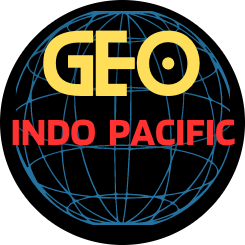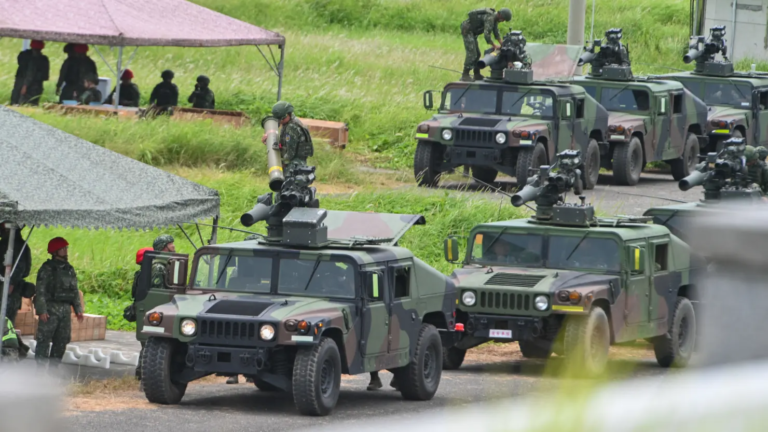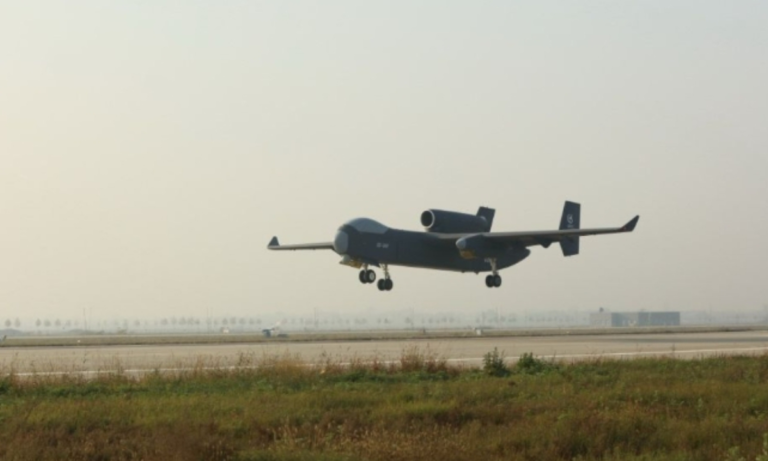
Recent heightened tensions in the region have drawn comparisons to historical naval deployments, most notably the US Navy’s “Great White Fleet” of the early 20th century. However, experts stress that the context and purpose of this historic voyage stand in stark contrast to the current situation.
While China’s recent increase in naval presence has sparked concerns and been interpreted by some as a projection of power, the Great White Fleet’s circumnavigation of the globe between 1907 and 1909 was explicitly designed as a goodwill mission. Deployed by President Theodore Roosevelt, the flotilla of battleships, painted pristine white, visited numerous ports worldwide, including Japan, Australia, and various European nations.
“The Great White Fleet wasn’t about intimidation or asserting dominance,” explains Dr. Eleanor Vance, a historian specializing in naval diplomacy. “It was a carefully orchestrated soft power exercise, intended to showcase American naval might while emphasizing peaceful intentions and fostering international cooperation.”
The voyage aimed to demonstrate America’s growing industrial capacity and its commitment to global trade and diplomacy. Each port call involved elaborate ceremonies, social gatherings, and diplomatic exchanges, solidifying relationships and promoting understanding. Historians largely agree that the mission was a success, strengthening America’s image as a rising power and fostering goodwill with participating nations.
In contrast, the rationale behind recent Chinese naval activity is often perceived differently. While Chinese officials often state their actions are for defensive purposes and maintaining regional stability, critics point to territorial disputes and increasing assertiveness in international waters as evidence of a more aggressive agenda.
“The difference lies in the intent and the reception,” clarifies geopolitical analyst, Professor Liam Davies. “The Great White Fleet was welcomed with open arms, symbolizing a desire for collaboration. The current naval presence is met with apprehension and suspicion, reflecting concerns about regional power dynamics.”
The legacy of the Great White Fleet serves as a reminder that naval power can be wielded as a tool for both coercion and cooperation. Understanding the historical context and the differing objectives behind naval deployments is crucial for navigating the complexities of international relations and avoiding misinterpretations that could escalate tensions. While the sight of a large naval fleet might evoke similar images, the message conveyed by each is profoundly different, highlighting the importance of diplomacy and trust in a rapidly changing global landscape.
When the US Navy’s Great White Fleet sailed into Sydney Harbour in 1908, it was an unmistakeable signal of imperial might, a flexing of America’s newfound naval muscle. More than a century later, the Chinese navy has been executing its own form of gunboat diplomacy by circumnavigating Australia—but without a welcome. The similarities and differences between these episodes tell us a lot about the new age of empires in which Australia now finds itself.
Both were shows of force. The former expressed President Teddy Roosevelt’s foreign policy of speaking softly while carrying a big stick—the original version of peace through strength—while the latter aimed at disturbing the peace.
The Great White Fleet’s visit was a spectacle. Australians cheered as 16 gleaming battleships, painted white and with shiny trim, paraded into Sydney Harbour. A flight of steps, the Fleet Steps, was specially built in the Royal Botanic gardens to receive the American visitors.
The visit was a calculated diplomatic manoeuvre by Prime Minister Alfred Deakin in making the invitation and by US President Teddy Roosevelt in accepting it. Both Australia, a young federation deeply tied to the British Empire, and the United States, a rising but not yet super power, saw value in signalling US Pacific presence to Japan.
For Roosevelt, the fleet also presented his big-stick foreign policy to European nations: the US had arrived as a global power. Just as important, he saw the fleet’s world tour as helpful in explaining to the American people why they needed to spend money on defence, including ships, as their country opened up to global opportunities but also threats. Deterrence, preparation, social licence all strengthened national resilience.
Deakin saw the chance and didn’t just invite the fleet to Australia but engineered the visit. He wanted the visit to kindle the notion in Australia that it should have its own fleet. Irregular Royal Navy deployments to the Far East could not guarantee Australian security.
Also like Roosevelt, Deakin knew that a passive approach to defence policy would not keep the nation safe in an era of rising military powers, with a strategic shift to proactive engagement needed urgently, not only once a crisis had begun. He was especially concerned about Japan’s growing sea power but, again like Roosevelt, he also had an eye on Russian and (later) German sea power.
While Deakin wanted a national navy and was an empire man, he thought it prudent to start building a partnership with the US. Not yet replacing Britain as global leader, it had burst on to the strategic scene only a decade earlier. It had annexed the Philippines in 1898 in the Spanish-American War and, in the same year, the Hawaiian Islands. These made the US a Pacific power.
Both men in the early 1900s understood the connection between European and Pacific security and both set out to protect their national interests by working together against European and Asian powers seeking to create instability and spheres of influence.
As Russell Parkins well describes in Great White Fleet to Coral Sea, Deakin noted in one of his written invitations to the US that ‘No other Federation in the world possesses so many features of likeness to that of the United States as does the Commonwealth of Australia’. Roosevelt later acknowledged he had not originally planned for the fleet to visit Australia but that Deakin’s invitation had confirmed his ‘hearty admiration for, and fellow feeling with, Australia, and I believe that America should be ready to stand back of Australia in any serious emergency’.
This was naval might wielded with soft edges: immense firepower floating on the harbour, and friendly chats over tea ashore.

Today the strategic environment again involves European and Asian powers—Russia and China—seeking spheres of influence, only the dynamics of the naval visit couldn’t be more different. No time for afternoon tea, just the reality that Australia faces a security threat from Beijing that demands national preparedness and international friendships and alliances.
When Australia and China encounter each other at sea, the interactions are adversarial, accompanied by dangerous Chinese manoeuvres, high-powered lasers shining into cockpits, chaff dropped into Australian aircraft engines and sonar injuring Australian navy divers. These are not friendly port calls but dangerous military activities and displays of coercive statecraft.
The Great White Fleet sought goodwill and alliances. China’s naval behaviour is an assertion of dominance. If the Australian public were in any doubt about how Beijing intended to interact with the region, China’s behaviour in this most recent episode should be instructive. The lack of warning given to Australia was a warning itself of what is to come. Beijing wants us to heed it and submit.
We must not submit. We must learn from the incident and change Beijing’s behaviour.
When a Chinese naval flotilla last made a port call to Sydney, in 2019, it was met with some public unease, if not alarm. Australia had, after all, approved the visit. But through a combination of Canberra’s ignorance of history and Beijing’s aim of rewriting it, the visit was approved without recognising that it coincided with the 30th anniversary of the Tiananmen Square massacre.
Not long after the negotiated port visit, China suspended ministerial-level engagement as part of coercion to bring Australia into line. Despite some warming in relations in recent years, Beijing chose not to give Australia advance notice of live-fire exercises. The same Beijing that only a few years ago gave notice of a visit now has the confidence to fire at will.
Australia must stop being surprised by every new Chinese military or hybrid warfare development. Beijing’s confidence is growing in all domains, including cyberspace. With intrusions known as Volt Typhoon, China’s intelligence agencies were outed in 2023 as having pre-positioned malware for disrupting and destroying our critical infrastructure. This should also be seen as a rehearsal for later cyber moves.
And now, for the first time in the modern era, we have seen a potential adversary rehearse its wartime kinetic strategy against Australia. Yes, the Japanese did surveillance and intelligence gathering before World War II, but this circumnavigation with live-fire exercises takes us well beyond intelligence collection. Beijing has been undertaking ‘intelligence preparation of the battlespace’ for some time with ships it frequently sends to Australian waters to observe our exercises or to conduct oceanographic studies (which improve submarine operations).
Just as the Great White Fleet helped to inspire the development of an Australian navy, the Chinese flotilla should warn us that our own fleet needs to be larger and ready to assure our security. The rhyme of history is that distant fleets operating in Australian waters matter and should spur our own thinking (and act as catalysts for action) regarding Australian sovereign capabilities.
After all, these episodes underscore an enduring truth about Australia’s geopolitical reality: we are a regional power situated between global hegemons and their very large navies. One could even say that we are girt by sea power. But this is not new territory; it is the blessing and burden of geography and history.
Whether it was navigating the transitions from British to American primacy in the Pacific or more recently adjusting to China’s challenge to the US-led order, Australia has always had to manage its strategic relationships with agility and nuance.
The key difference, of course, is that Australia welcomed the Great White Fleet in 1908 with open arms. Today, Australia finds itself on the receiving end of an unwelcome presence by ships that appear uninterested in friendly port visits. This demands a response that is not reckless but is firm enough to avoid being feckless.

Although the position is difficult, the Australian government should not think it must walk a tightrope in dealing with China. The strength of response to Beijing’s aggression should depend on the minimum needed to deter more aggression, not by a perceived maximum that will leave trade and diplomatic relations unharmed. European countries have made such mistakes in handling Russia—declining to hold it to account in the hope that Putin would keep selling gas to them and delay military action.
There’s no use in pretending or hoping there is nothing to see here except one-off instances of unpleasant behaviour. China’s aggression follows its concept of dealing with the rest of the world, and it won’t stop. Quiet diplomacy won’t deter Beijing from more dangerous behaviour but will embolden it to repeat its actions. Each instance will show Australia is incapable of doing anything about it until Beijing—mistakenly or intentionally—goes so far as to make conflict inevitable. Australia’s time to stand up cannot wait until a live fire drill becomes just live fire.
As Teddy Roosevelt put it, big-stick foreign policy involves ‘the exercise of intelligent forethought and of decisive action sufficiently far in advance of any likely crisis’. Navigating the best response to aggression therefore requires clarity about what is at stake.
What Australia does in the South China Sea—where it operates in accordance with international law alongside allies—is not equivalent to China’s recent foray into the Tasman Sea. Beijing’s actions represent yet another demonstration of reckless behaviour, following its dangerous harassment of Australian forces. By making various attacks—with lasers, chaff or sonar—China shows an undeniable pattern of attempted intimidation. When Australia sails into international waters, we do so to maintain the rules-based order and promote regional stability, yet when China does the same it is often to undermine the rules and destabilise the region.
The intimidation is in fact regional; it’s not just about Australia. Just as the Great White Fleet demonstrated America’s arrival as a Pacific power, China’s naval activities signal Beijing’s intent to reshape the region’s strategic balance. Australia, as it has done before, must adapt. It must spend more on its own defence capabilities, deepen relationships with like-minded democracies and maintain the diplomatic dexterity that has long supported its survival in a world of rising and falling empires.
Most importantly, the government must bring the Australian public along for the voyage. The threat from China should surprise Australians no more than the threat from Putin should surprise Europeans.
Knowledge is power and the Australian public can be empowered, and therefore prepared, not to be shell-shocked by China’s aggression. It should instead be reassured that the Australian government has the situation in hand and that defence investment is a downpayment on our future security. It should be reassured that the spending makes conflict less likely.
Australia is not a major power, but we have the world’s 13th largest economy and are not without influence. We should stop seeing ourselves as a middling middle power. We definitely shouldn’t act as a small power. We should be confident as a regional power. Our voice, actions and choices matter at home and abroad. It’s why Washington wants us as an active partner and Beijing wants us to be a silent one. Australia’s global advocacy for a rules-based system, and its public calling out of Beijing’s wrongdoing have been highly valued in Europe, Asia and North America.
Smaller regional countries rely on us to stand up to Beijing where they feel unable, while Europe increasingly knows the fight against Russia is also a fight against Russia’s ‘no-limits’ partner, China. And an Australia that stands up for itself and our friends will again demonstrate the value of partnerships to our ally the US.
Roosevelt’s Great White Fleet epitomised show of force as a means to deter conflict as well as preparation should deterrence fail. (Its cruise was also an exercise in long-range deployment.) The time for deterrence and preparation is with us once again. A Chinese foreign ministry spokesperson said this month that China was ready for war, ‘be it a tariff war, a trade war or any other type of war, we’re ready to fight till the end.’
We need to show, along with our ally the US and other partners, that war is not what we want but is something we are prepared for. If we cannot show that we have a capable stick, and the intention to use it if required, we will be defeated with or without a fight.
As Teddy Roosevelt said: ‘Peace is a great good; and doubly harmful, therefore, is the attitude of those who advocate it in terms that would make it synonymous with selfish and cowardly shrinking from warring against the existence of evil.’
The past tells us that navigating strategic competition requires a blend of strategic foresight and political agility. The echoes of 1908 should serve as both warning and guidepost for the uncertain waters ahead.





